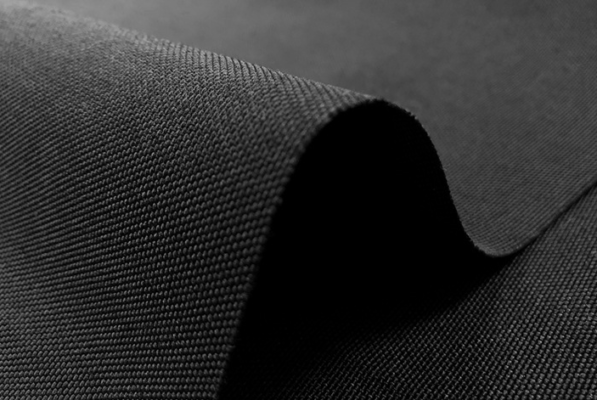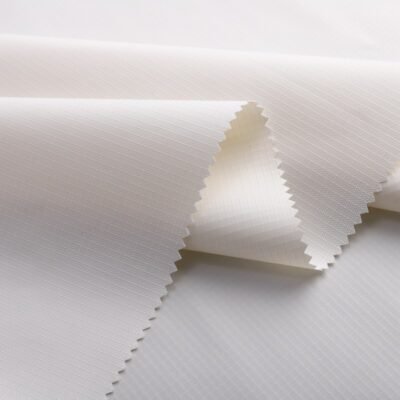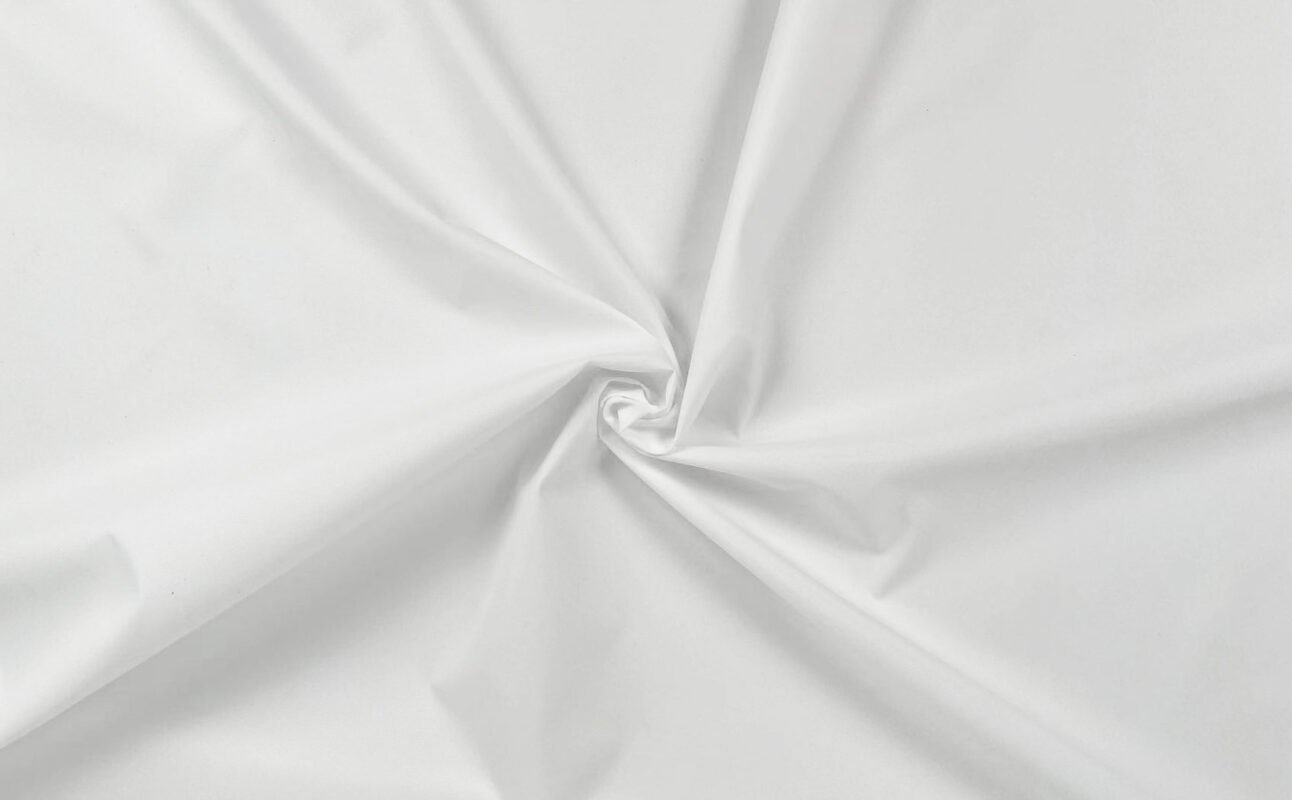Knowledge
Selection of polyester and nylon fabrics for feather flags
Introduction
The Versatile World of Feather Flags
In the dynamic realm of advertising and promotional tools, feather flags stand out as both eye-catching and effective.
These fluttering banners, often seen gracing outdoor events, storefronts, and trade shows, are not just a means to display messages or logos; they are a canvas where material choice significantly influences their impact and longevity.
Among the plethora of fabric options, polyester and nylon have emerged as frontrunners, each bringing unique qualities to the table.

Polyester and Nylon: A Tale of Two Fabrics
Polyester, a synthetic fabric, is revered for its durability, ease of maintenance, and affordability. Its ability to withstand various weather conditions makes it a staple in the outdoor advertising world.
On the other hand, nylon, also synthetic, boasts superior strength and flexibility. Its high-quality sheen and ability to hold vibrant colors give it an edge in visual appeal.
However, the choice between polyester and nylon isn’t just a matter of aesthetics; it encompasses factors like location, weather resistance, and purpose of use.
Setting the Stage for Comparison
As we delve deeper into the world of feather flags, it becomes evident that the fabric is more than just a background material; it is the heart and soul of the flag’s performance and presentation.
Understanding the nuanced differences between polyester and nylon will guide us in making informed decisions for our specific advertising needs.
This blog post aims to explore these fabrics in detail, compare their properties, and ultimately help you select the right material for your feather flags.
| Property | Polyester Fabric | Nylon Fabric |
|---|---|---|
| Strength | 4~7 cN/dtex | 7~9.5 g/d |
| Tear Resistance | Good | Very Good |
| Abrasion Resistance | Average | Excellent |
| Hand Feel | Stiff | Soft |
| Color | Vivid Colors | Rich Colors, slightly less stable |
| Color Fastness | Excellent light and wash fastness | Slightly inferior color fastness |
| Cost | Economical | Slightly expensive |
| Moisture Absorption | Low | High |
| Melting Point | 255°C | 220°C |
| Density | 1.38~1.40 g/cm³ | 1.14 g/cm³ |
| Resistance to Photolysis | Strong | Slightly weaker |
| Chemical Resistance | Acid resistant but not alkali resistant | Alkali resistant, slightly less acid resistant |
| Environmental Impact | Recyclable | Recyclable |
Polyester Fabrics for Feather Flags
Unveiling Polyester: A Synthesis of Durability and Practicality
Polyester is a synthetic fiber made by chemical polycondensation of organic dibasic acids and diols, which is a type of polymer compound. Its invention dates back to the 1930s, and today it is one of the most important of the synthetic fibers.
Polyester fiber has many advantages. First of all, it has excellent wrinkle resistance and shape retention, so that clothing made from it does not wrinkle easily during wear and retains its original shape. Secondly, polyester fibers have high strength and elastic recovery, making woven fabrics strong and durable, as well as being able to quickly return to their original shape. In addition, polyester fibers are resistant to abrasion and non-sticky lint, making the fabrics look neater and cleaner.
The Enduring Qualities of Polyester
The primary allure of polyester lies in its exceptional durability. Designed to resist stretching, shrinking, and abrasions, it upholds its structure in various climatic conditions. This resilience is paramount for feather flags, which often face the brunt of outdoor elements. The fabric’s resistance to wrinkling and ease of returning to its original shape after being folded or crumpled makes it ideal for repeated use, a common scenario in promotional events.
Color Retention and Vibrancy
Another significant advantage of polyester is its impressive color retention. The dye bonds deeply with the fibers, allowing the fabric to maintain its vibrancy over time, even under consistent exposure to sunlight. This quality is critical for feather flags, as the brightness and clarity of their colors directly impact their visibility and effectiveness as advertising tools.
Types of Polyester in Feather Flags
Polyester for feather flags is not a monolith; it comes in various types, each serving specific purposes. The most commonly used varieties include:
- Knitted Polyester: Renowned for its flexibility and light weight, knitted polyester allows the flag to flutter gracefully in the wind, capturing attention with its dynamic movement.
- Spun Polyester: This type is lauded for its cloth-like feel and increased durability. Spun polyester is often chosen for locations with higher wind speeds, where extra resilience is needed.
- Oxford Polyester: Known for its heavier and more textured feel, Oxford polyester is a go-to choice for double-sided feather flags, offering a balance between weight and wind permeability.
Maintenance and Longevity
Maintaining polyester feather flags is relatively straightforward, adding to their appeal. They can be machine washed in cold water and laid flat or hung to dry. Avoiding harsh detergents and bleaches will prolong their life, preserving the fabric’s integrity and color. Moreover, polyester’s quick-drying nature means the flags can be back in use swiftly, an essential factor for time-sensitive events.
Nylon Fabrics for Feather Flags

Nylon: The Fusion of Strength and Aesthetics
Nylon represents a broad category of synthetic polymers, known as polyamides, characterized by amide bonds connecting recurring units. Exhibiting a lustrous quality akin to silk, nylon is a thermoplastic derived predominantly from petroleum. It possesses the versatility to be melted and reformed into a wide array of products including fibers, sheets, and complex shapes. The adaptability of nylon polymers is further enhanced when they are blended with a diverse range of additives, permitting an assortment of property modifications.
The Strength Behind the Sheen
Nylon’s most notable attribute is its impressive tensile strength. It can withstand significant stress without losing its shape, a critical feature for feather flags that need to endure fluctuating wind conditions. This resilience ensures that the flags remain intact and functional over extended periods, even in challenging environments.
Exceptional Color Depth and Luminosity
Where nylon truly shines is in its ability to showcase colors with a distinct sheen and depth. Nylon flags exhibit a lustrous quality that enhances the visual impact of the printed designs. The fabric’s capability to hold and radiate vibrant colors makes it ideal for creating eye-catching and memorable promotional materials.
Care and Durability
Nylon feather flags require careful maintenance to preserve their quality. Hand washing in cold water with mild detergents is recommended to prevent damage. Avoiding prolonged exposure to direct sunlight can also extend the life of the fabric, as nylon can be more prone to UV degradation compared to polyester. Quick-drying and resilient, nylon flags can be back in action quickly after cleaning.
Comparing Polyester and Nylon
Durability Showdown: Polyester vs. Nylon
When it comes to selecting the right fabric for feather flags, understanding the durability of polyester and nylon is crucial. Polyester, known for its robustness, excels in resisting stretching and shrinking, making it ideal for long-term outdoor usage. It maintains its shape and structure even in challenging weather conditions. Nylon, on the other hand, boasts superior tensile strength. This makes it more suitable for environments with high winds, where flexibility and resistance to tearing are paramount.
Colorfastness and Print Quality
The battle of color retention and print quality between these two fabrics is a close one. Polyester, with its excellent colorfastness, ensures that colors stay bright and do not fade easily over time, even with consistent exposure to sunlight. Nylon, with its inherent sheen, provides a high-definition quality to printed graphics. Its ability to make colors appear more vibrant and visually striking gives it an edge in scenarios where attracting immediate attention is key.
Weather Resistance: A Critical Factor
Both polyester and nylon offer commendable weather resistance, but their performances differ slightly under various conditions. Polyester’s water-resistant nature makes it less susceptible to mildew and dampness, an advantage in rainy or humid climates. Nylon, while also weather-resistant, may absorb more moisture and take longer to dry, potentially leading to issues in consistently wet environments.
Cost-Effectiveness and Longevity
The cost-effectiveness of a fabric is often a deciding factor. Polyester generally comes with a lower price tag, offering a budget-friendly option without compromising on quality and durability. Nylon, typically pricier, justifies its cost with its strength and superior aesthetic appeal. In terms of longevity, both materials are comparable, with proper maintenance playing a crucial role in extending their lifespan.
Selecting the Right Fabric for Your Needs
Tailoring Your Choice to Specific Conditions
Choosing between polyester and nylon for your feather flag hinges on a variety of factors. It’s not just about aesthetic preference but about matching the fabric to the specific conditions and requirements of your use case.
Considering Location and Weather
- Outdoor vs. Indoor: For outdoor settings, particularly those exposed to harsh weather conditions, polyester’s resistance to elements makes it a favorable choice. In contrast, for indoor events or less demanding outdoor environments, nylon’s visual appeal and flexibility can be more advantageous.
- Climatic Conditions: In areas with high humidity or frequent rain, polyester’s quick-drying and mildew-resistant properties are beneficial. Nylon, while also weather-resistant, is better suited for dry conditions due to its moisture absorption tendencies.
Frequency of Use and Longevity
- Regular vs. Occasional Use: If your feather flag will be used frequently and subjected to regular wear and tear, polyester’s durability makes it a sensible choice. Nylon, while strong, is better suited for occasional use or in situations where the flag’s visual impact is more critical.
- Maintenance Considerations: Polyester’s ease of care and resilience to frequent washing make it ideal for flags that need regular cleaning. Nylon flags, requiring more delicate handling, are preferable in settings where they won’t require constant maintenance.
Customization and Budget Constraints
- Printing Needs: If your design involves vibrant colors and detailed graphics, nylon’s sheen and color depth might be more appealing. However, polyester still offers excellent print quality and color retention for most needs.
- Cost Considerations: Polyester’s cost-effectiveness is an attractive feature for budget-conscious buyers, especially for large-scale or multiple flag projects. Nylon, while more expensive, offers a premium look and feel, justifying its price for high-impact branding needs.
Conclusion
Synthesizing the Fabric Selection Journey
As we conclude our exploration into the world of polyester and nylon fabrics for feather flags, it’s evident that each material offers distinct advantages tailored to different needs and conditions. Polyester, with its unmatched durability, cost-effectiveness, and ease of maintenance, stands as a reliable choice for frequent outdoor use, especially in challenging weather. Nylon, with its strength, superior sheen, and vibrant color presentation, excels in creating visually striking displays for high-impact advertising.
Making an Informed Decision
The decision between polyester and nylon should be informed by a careful consideration of your specific advertising goals, environmental conditions, and budget constraints. Whether you prioritize longevity, aesthetic appeal, or cost-effectiveness, both fabrics present viable options with their unique strengths.
Embracing Quality in Advertising
Selecting the right fabric for your feather flags is more than a practical decision; it’s a commitment to quality and effectiveness in your advertising efforts. By choosing the material that best aligns with your brand’s message and the flag’s intended use, you ensure that your promotional tool not only attracts attention but also withstands the test of time and elements.
As you embark on your next advertising venture, remember that the right fabric can elevate your feather flag from a mere promotional item to a durable, eye-catching symbol of your brand’s commitment to quality and impact.
